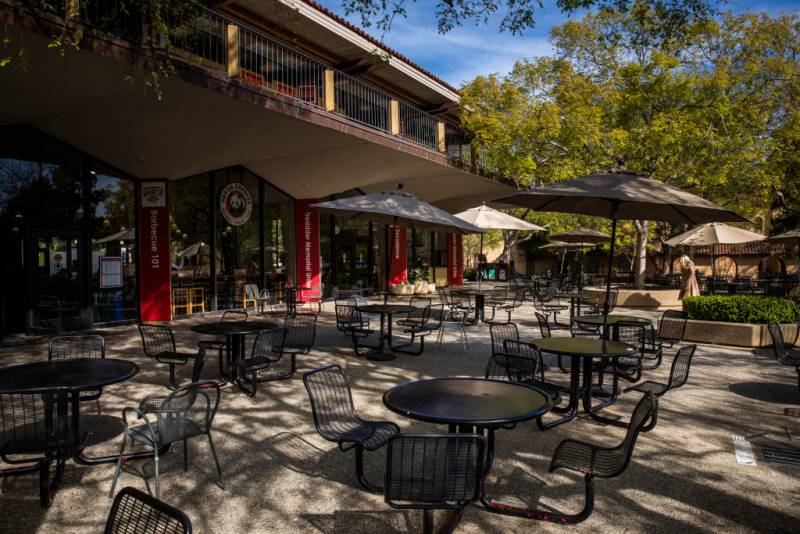But Santa Clara County’s executive officer, Dr. Jeffrey Smith, also stressed that the region isn’t out of the woods.
“This is not something that’s going to be easy to do,” he said.
One goal of Mordecai and her team is to help the public think long-term in the same way that researchers can and public officials are trying to.
‘Extreme’ or ‘Moderate,’ Social Distancing Takes Time
Mordecai’s model looks at how quickly this coronavirus can spread through a population by calculating what’s called the “reproduction rate,” which describes the average number of people who will catch COVID-19 from one person who’s already infected. A reproduction rate of 12 means each infected person is likely to infect 12 others.
You might hear public health officials occasionally use the mathematical term for reproduction rate, R0, pronounced “r-naught.” That’s because they are focused on how to get R0 to a number below one–a necessary step for shrinking the reach of COVID-19.
Mordecai says they’re able to estimate what’s going on in Santa Clara because Bay Area residents complied with strong social distancing orders in the middle of March, creating several weeks of relevant case and hospitalization data. The new analysis finds that the R0 for Santa Clara County would be between 3 and 4 if shelter at home weren’t happening, meaning each new case of COVID-19 would be infecting three or four other people.
In order to get that rate below one within five months, Mordecai says, people would need to cut their social contacts by about three-quarters compared to before shelter at home began.
Mordecai defines that as extreme social distancing–and she says that there’s some wiggle room in understanding how to do that. “Social contacts” doesn’t just mean social occasions, like dinner with friends, a movie date, or family game night: it also means how you enter public spaces and interact with people at grocery stores, on public transit, on the way to work, or even at the shop fixing your car.
People also have different abilities to be physically distant from others; Mordecai, for example, says it’s easy for her to limit social contacts compared to before because school is cancelled. Home health aides might only be able to limit their exposures somewhat.
“This actually turned out to be one of the key pieces of information that we really don’t have right now: how much does something like a shelter in place order actually reduce people’s contact rates?” Mordecai says.
Knowing that, she says is important for modeling how long and how effective the social distancing orders can be. Still, even cutting social contacts in half, which she characterizes as medium social distancing, would make a difference.
A ‘Light Switch’ Method With Many Switches
Health leaders at all levels are still figuring out how to talk about how and when to lift the social distancing orders.
“When you say ‘back to normal,’ it will not be a light switch that you turn on and off,” Dr. Anthony Fauci, director of the National Institute of Allergy and Infectious Diseases, told CBS This Morning last week.
It might be like several light switches, over a year or more. That’s what researchers from Imperial College suggested could slow the spread of COVID-19: combining sheltering in place with other interventions, like limiting the use of public space, and starting and stopping these practices over periods of time: essentially, switching them on and off. Mordecai says her team’s model supports this.
In California, public health officials say their ability to choose longer-term interventions effectively depends, in part, on testing and aggressively tracing the spread of coronavirus.
If that happens, “we could do a lot more tailored interventions and not have to have everybody stay home,” Mordecai says. That could include letting more businesses reopen, or asking only vulnerable people to shelter in place.
But that’s still a ways off, according Santa Clara County public health officials. Cody told supervisors the county needs to see a “sustained reduction in cases” before transitioning to a different kind of social distancing.
So it’s still too early to plan on going to 49er games.

